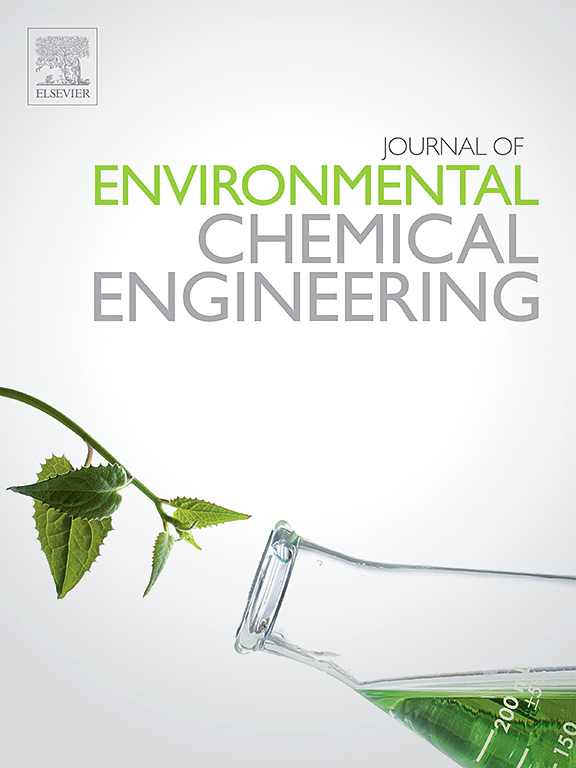IF 7.4
2区 工程技术
Q1 ENGINEERING, CHEMICAL
引用次数: 0
摘要
聚羟基烷酸酯是化石燃料塑料的理想替代品,其主要特点是具有生物降解性和生物相容性。尽管如此,限制 PHA 市场供应的一个主要瓶颈是,与传统塑料和其他生物基聚合物相比,PHA 的生产成本极高。废物变生物塑料的概念可在利用废物材料发展可持续经济方面发挥双重重要作用。本综述深入分析了从各种废物流(如食物废物、脂类废物、纸浆和造纸废物、农业废物以及其他有机废物)中合成 PHA 的成本效益。此外,综述还反映了细菌 PHA 合成的最新进展,如生物过程优化、代谢途径工程、启动子工程、CRISPR-Cas9 技术、细胞形态工程和合成生物学方法,以有效生产 PHA。综述进一步指出,选择合适的微生物、原料性质、优化生物工艺以及实施创新代谢工程策略,将在克服与 PHA 工业化相关的潜在障碍方面发挥重要作用。本文章由计算机程序翻译,如有差异,请以英文原文为准。
Wastes valorization to polyhydroxyalkanoate: Key concepts and strategies to overcome potential challenges
Polyhydroxyalkanoates are promising substitutes for fossil fuel-based plastics, primarily distinguished by their biodegradability and biocompatible nature. Despite this fact, a major bottleneck that limits PHA availability in the marketplace is its exceptionally high production cost compared to conventional plastic and other biobased polymers. The waste-to-bioplastic concept may play a dual significant role in the utilization of waste material to develop a sustainable economy. Herein, the current review provides an in-depth analysis on the cost-effective synthesis of PHA from various waste streams such as food wastes, lipid wastes, pulp and paper wastes, agricultural wastes, as well as other organic wastes. Besides, the review reflected on the recent advancements in bacterial PHA synthesis, such as bioprocess optimization, metabolic pathways engineering, promotor engineering, CRISPR-Cas9 technology, cell morphology engineering, and synthetic biology approaches for effective PHA production. The review further suggested that the selection of suitable microbes, nature of feedstock, optimized bioprocess, and implementation of innovative metabolic engineering strategies would play a significant role in overcoming the potential barriers associated with PHA industrialization.
求助全文
通过发布文献求助,成功后即可免费获取论文全文。
去求助
来源期刊

Journal of Environmental Chemical Engineering
Environmental Science-Pollution
CiteScore
11.40
自引率
6.50%
发文量
2017
审稿时长
27 days
期刊介绍:
The Journal of Environmental Chemical Engineering (JECE) serves as a platform for the dissemination of original and innovative research focusing on the advancement of environmentally-friendly, sustainable technologies. JECE emphasizes the transition towards a carbon-neutral circular economy and a self-sufficient bio-based economy. Topics covered include soil, water, wastewater, and air decontamination; pollution monitoring, prevention, and control; advanced analytics, sensors, impact and risk assessment methodologies in environmental chemical engineering; resource recovery (water, nutrients, materials, energy); industrial ecology; valorization of waste streams; waste management (including e-waste); climate-water-energy-food nexus; novel materials for environmental, chemical, and energy applications; sustainability and environmental safety; water digitalization, water data science, and machine learning; process integration and intensification; recent developments in green chemistry for synthesis, catalysis, and energy; and original research on contaminants of emerging concern, persistent chemicals, and priority substances, including microplastics, nanoplastics, nanomaterials, micropollutants, antimicrobial resistance genes, and emerging pathogens (viruses, bacteria, parasites) of environmental significance.
 求助内容:
求助内容: 应助结果提醒方式:
应助结果提醒方式:


